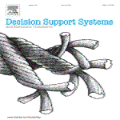Implementing accurate Distribution System State Estimation (DSSE) faces several challenges, among which the lack of observability and the high density of the distribution system. While data-driven alternatives based on Machine Learning models could be a choice, they suffer in DSSE because of the lack of labeled data. In fact, measurements in the distribution system are often noisy, corrupted, and unavailable. To address these issues, we propose the Deep Statistical Solver for Distribution System State Estimation (DSS$^2$), a deep learning model based on graph neural networks (GNNs) that accounts for the network structure of the distribution system and for the physical governing power flow equations. DSS$^2$ leverages hypergraphs to represent the heterogeneous components of the distribution systems and updates their latent representations via a node-centric message-passing scheme. A weakly supervised learning approach is put forth to train the DSS$^2$ in a learning-to-optimize fashion w.r.t. the Weighted Least Squares loss with noisy measurements and pseudomeasurements. By enforcing the GNN output into the power flow equations and the latter into the loss function, we force the DSS$^2$ to respect the physics of the distribution system. This strategy enables learning from noisy measurements, acting as an implicit denoiser, and alleviating the need for ideal labeled data. Extensive experiments with case studies on the IEEE 14-bus, 70-bus, and 179-bus networks showed the DSS$^2$ outperforms by a margin the conventional Weighted Least Squares algorithm in accuracy, convergence, and computational time, while being more robust to noisy, erroneous, and missing measurements. The DSS$^2$ achieves a competing, yet lower, performance compared with the supervised models that rely on the unrealistic assumption of having all the true labels.
翻译:执行准确的分销系统国家估算值(DSSE)面临若干挑战,其中包括缺乏可观察性以及分配系统密度高。虽然基于机器学习模型的数据驱动替代数据可能是一种选择,但由于缺乏标签数据,DSSE会受到数据驱动的替代方法的损害。事实上,分配系统中的测量数据常常吵闹、腐败和不可用。为了解决这些问题,我们提议发行系统国家估算值(DSS$2美元)的深度统计解析器(DSS$2美元),这是基于图表神经网络的深度强度学习模型,其中说明了分配系统的网络结构以及实际管理正常电流流等值等。DSS2美元利用高压图代表分销系统的不同组成部分,并通过无中心信息传递计划更新其潜在表现。为了解决这些问题,我们提出了一种监督薄弱的学习方法,将DSS2美元用于学习和优化的时尚,WE2 将最低广场的测量值和假测算值推算出。通过将GNNSO值输出数据引入电流的直径方程式,将数据转换为DSIS的直径,然后将数据转换为SDSDSD的计算值数据转换为直径流流流流流数据,同时将SDLSDSDSDSDSDSDS的计算值数据转换为SD。




